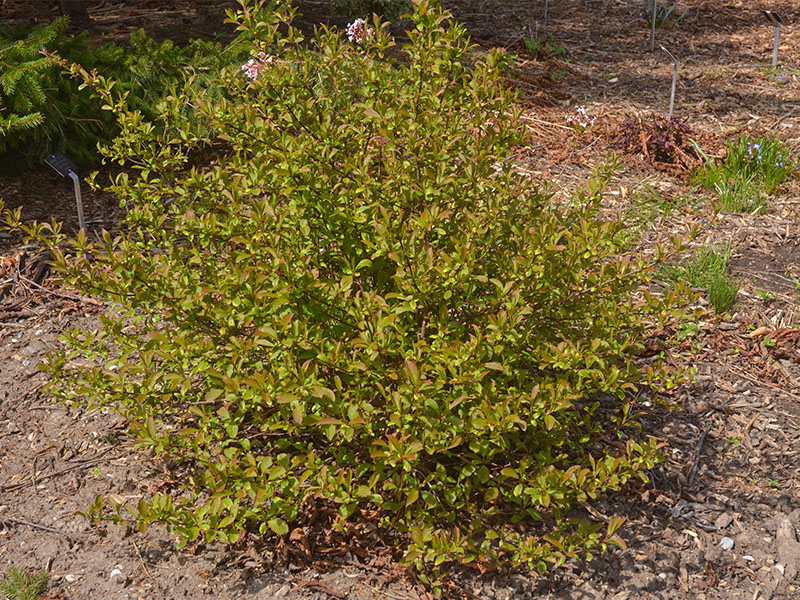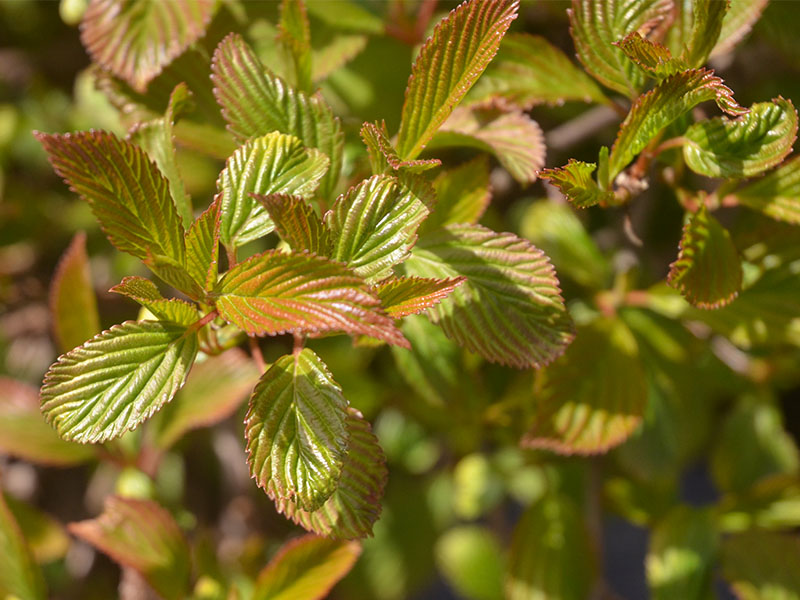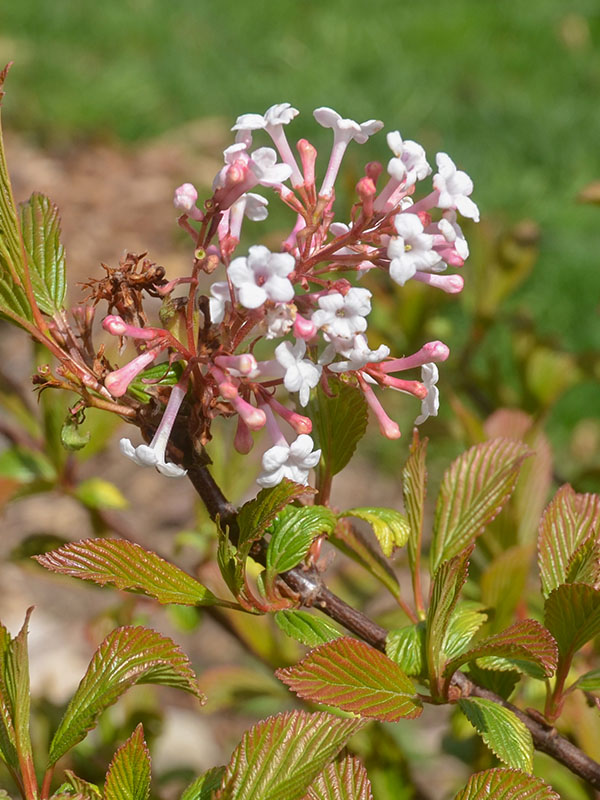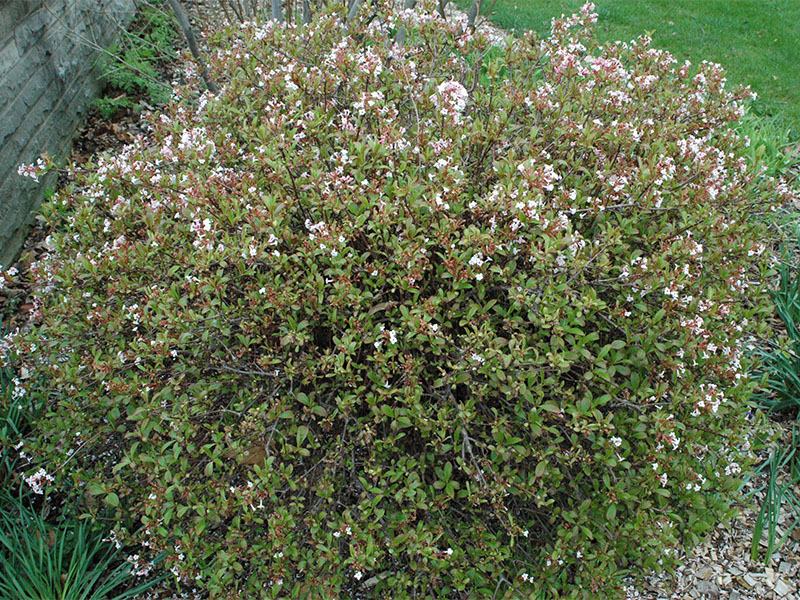| General Description | Large upright deciduous shrub. |
| ID Characteristic | Veined oval leaves with clusters of white flowers. |
| Shape | Upright. |
| Landscape | Low maintenance hedging and screens, garden borders, city and courtyard gardens, urban properties, cottage borders or as a specimen. |
| Propagation | Softwood cuttings. |
| Cultivation | Grow in full sun to full shade in moist, fertile, well-drained soil of any acidity. |
| Pests | None known. |
| Notable Specimens | The A.M. Cuddy Gardens, Strathroy, Ontario, Canada. |
| Bark/Stem Description | Smooth woody bark with minute leaf scarring. |
| Flower/Leaf Bud Description | Small, insignificant scaled leaf buds that grow along branches. Flower buds are tubular-lanceolate. |
| Leaf Description | Serrated pinnate leaves that grow up to 10 cm in length. |
| Flower Description | Pleasantly aromatic tubular-lanceolate blooms in terminal trusses throughout the shrub. |
| Fruit Description | Fruits are small and spherical, appearing in small clumps after flowers. |
| Colour Description | Dark green leaves, rosy pink blooms, reddish-brown bark and bright red berries. |
| Texture Description | Medium. |




